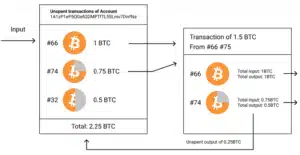Unlocking the Secrets of Write Once, Read Many (WORM)

Organizations acquire a lot of data, yet there are instances when they need or want to keep it in an unalterable format.
A non-profit organization may choose to preserve its financial information in this manner regularly for legal reasons. An institution may desire to save graduation data in this manner in case physical records are destroyed in an accident. Businesses may want unalterable records to avoid tampering, which might conceal fraud.
Write Once, Read Many (WORM) is the best way to do this. It’s no wonder that many struggle to grasp a name like that. Let’s dive in!
Table of Contents
What Is WORM (Write Once, Read Many)?
In computer media, Write Once Read Many (WORM) is a data storage system that enables data to be written to a storage medium only once, preventing the data from being deleted or changed. Data stored on a WORM-compliant device is deemed immutable; authorized users may view the data as much as they need to, but they cannot modify it. Immutable storage is critical for achieving data security and compliance standards and defending against ransomware and other attacks.
Storage media that support WORM storage are intended to be non-rewritable to prevent someone from intentionally or unintentionally removing or changing the data once it is originally saved. Because of this characteristic, government organizations and businesses have long employed WORM devices for archiving. Organizations subject to compliance regulations find the technology valuable. For example, the Securities and Exchange Commission requires brokers and dealers to keep digital records on a storage medium that is non-rewritable and non-erasable.
How Do Write Once, Read Many Works?
WORM technology lets data be written to a storage media, such as optical disks or specialized hard drives, in a way that prohibits further alterations or deletions. The key premise is to implement a write-once policy, which means that once data is stored in storage, it becomes immutable and can only be read afterward.
This is usually accomplished using hardware or software constraints that limit further write operations on the stored data. Optical media, such as CD-R or DVD-R, are often used in hardware-level WORM systems because a laser physically modifies the medium during the first writing step, making it irreversible. Through access restrictions and encryption, software-based WORM systems enforce the write-once principle, guaranteeing that once data is written, it cannot be changed or removed without sufficient authority.
In sectors with rigorous legal requirements, WORM technology is extensively used to provide a secure and compliant solution to data storage. Its immutability characteristic is vital for maintaining the integrity of key documents, assisting with regulatory compliance, and protecting against data manipulation or loss.
Use Cases of Write Once, Read Many
Write Once, Read Many (WORM) is a data storage approach in which data is written to a storage media once and then read several times. This method is often used for regulatory compliance, data integrity, and long-term data preservation. Here are five applications of Write Once, Read Many (WORM) technology:
Regulatory Compliance
For secure data storage, WORM (Write Once, Read Many) technology is critical in the banking, healthcare, and law fields. It assures that data cannot be changed or destroyed, resulting in a strong compliance solution. This technology improves the integrity and dependability of important data, assuring the highest levels of data security and regulatory compliance. Its use in various industries emphasizes its relevance in preserving data security.
Legal Document Archiving
Legal documents, contracts, and agreements must be stored securely using WORM technology. It ensures that documents stay tamper-proof once kept in an unalterable condition. This capability improves dependability and generates a reliable and auditable record, which is critical for protecting the integrity of legal information and satisfying regulatory obligations.
Data Preservation in Research
When dealing with substantial data, research organizations and labs depend on WORM technology to ensure the integrity of their vital research data. This method ensures that it cannot be changed once data is saved, offering a strong barrier against unintended or malicious alterations. This assures the retention of correct records for future reference and enables experiment replication without the danger of damaged data integrity, adding to the dependability and validity of scientific results.
Financial Records and Audit Trails
WORM technology is critical in the financial industry, notably for audit trails and transaction data. It guarantees that a reliable and immutable record of financial transactions is created and maintained. This feature is critical for achieving compliance requirements and making audit procedures easier. WORM technology establishes a secure foundation by prohibiting unauthorized changes to transaction data, improving openness and accountability in financial processes. Its use in the finance sector emphasizes its importance in protecting the integrity of sensitive data and satisfying the stringent requirements of regulatory compliance.
Intellectual Property Protection
Organizations that manage intellectual property, such as patents, copyrights, and designs, might use WORM technology to strengthen their intellectual assets. This technique guarantees that once a document or record is saved, it cannot be changed, acting as incontrovertible evidence of original production and ownership. This improves intellectual property protection and offers a verifiable and auditable record, which is essential for legal and regulatory compliance. WORM technology is useful in preserving the integrity and authenticity of intellectual assets, providing enterprises with a strong solution for intellectual property management.
The Benefits of WORM
Write Once, Read Many (WORM) technology has significant advantages in various sectors and applications. Here are some significant benefits:
Data Integrity and Immutability
WORM technology protects data integrity by preventing unwanted or unintentional changes to stored information. This immutability is vital for preserving the credibility of key documents.
Security and Compliance
WORM storage assists enterprises in meeting regulatory obligations by offering a safe and compliant solution to store sensitive data. It safeguards data against alteration, unlawful access, and destruction.
Auditability and Accountability
Organizations may create a trustworthy audit trail using WORM technology. This improves accountability by letting businesses track and validate any access or changes to stored data, allowing for forensic investigation if necessary.
Long-Term Data Retention
WORM technology is ideal for long-term data preservation. It offers a low-cost method for keeping data securely over long periods without the danger of data corruption or loss.
Reduced Risk of Data Loss
Because WORM storage prohibits overwriting or deletion of stored data, the chance of unintentional or malicious data loss is considerably minimized. This is especially vital for sensitive data that must be kept for compliance, legal, or historical reasons.
Conclusion
Finally, WORM is an excellent option for enterprises facing various data management difficulties. From regulatory compliance to intellectual property protection, the immutability of WORM assures the integrity and security of important documents.
As technology advances, WORM plays an important role, providing advantages such as auditability, long-term data preservation, and data loss resistance. With new research into revolutionary storage media, the future of WORM offers even higher durability and dependability for archive applications. Understanding and using WORM technology is critical for ensuring trust, compliance, and the continuous integrity of stored information as companies traverse an increasingly data-driven future.









